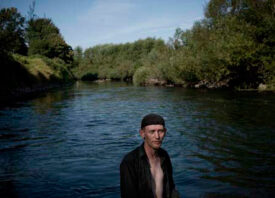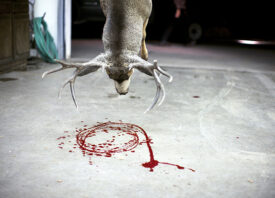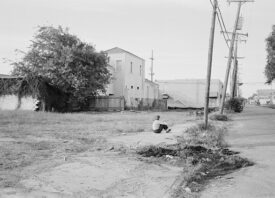Search this site
The Photographer Who Stalked a Serial Killer



From March 17th until July 11th, 2016, a serial shooter targeted the Phoenix neighborhood of Maryvale. The seven victims were random and innocent people, male and female, aged twelve to fifty-five. Survivors included two children, aged sixteen and four. The killer has not been identified.
In October of last year, some three months after the last reported shooting, Phoenix photographer Jesse Rieser made the forty-minute drive to Maryvale and spent a little more than a week in the neighborhood. Joining him was the French journalist Emmanuelle Andreani-Facchin of Society Magazine, who spoke with residents and detectives about the case. Their story ran in the magazine on the week of the US election, as part of the “America” issue.
Stalking a Serial Killer is composed of Rieser’s photographs and a select group of quotations pulled and translated from Andreani-Facchin’s reporting. For the photographer and his collaborators, the Maryvale neighborhood became a sometimes unsettling symbol for larger American political themes, including gun regulation, mental health, and immigration policies.
Minorities occupy a large part of the population in Maryvale, and recent developments in immigration policy— including 2010’s controversial Arizona Senate Bill 1070 and the tenure former Sheriff Joe Arpaio, whose raids and arrests in Latino neighborhoods were deemed unconstitutional— have left the community with a pervasive sense of anxiety and distrust.
The shootings, Rieser suggests, are particularly painful to swallow because the Maryvale neighborhood was already plagued by the threat of violence and deportation. An unidentified person, driving a car and shooting ordinary people, was the salt added to a deep wound. Some people, because of what they’ve seen in the past, aren’t able to trust the government and the police.
Rieser’s photographs of Maryvale aren’t literal; he wanted to paint a portrait of life in the neighborhood without giving too many specifics. The people in his pictures are not necessarily connected to the shootings; they’re just people he encountered while exploring.
He made the pictures in the vicinity of the sites of the shootings, but not all of them were taken at the exact locations. Some were a few doors down or across the street. He found the large bundle of security cameras near one of the sites, but he wasn’t able to get the story behind why they were there.
Rieser and his collaborators at Society chose to capture Maryvale in the daylight. The photographer worked under the high sun, when most people were at work or in school. The neighborhood was mostly empty during these hours, and the photographer found the whole experience uncanny and surreal. There were some days he ran into no one at all. He says he was never in any danger, but still, the fact of the shooter followed him.
“You can’t help but just feel a little paranoid,” he tells me.
Rieser talks about the “fine like between documentation and exploitation,” and in this case, he was able remain firmly on the side of documentation. He wasn’t interested in what the newspapers were running; he was more invested in the rhythms of daily routines. This is what remained after the news crews had left. People come to America in hopes of a better life. They don’t always find it.
The text, of course, is never attributed to one individual. It’s many voices— law enforcement, locals, etc— blended to become one. Juan Carlos Pagan created the typography for the piece, working with the photographer to make sure it seemed “urgent but not cartoonish.”
I asked Rieser whether or not the photographs mean something different in the wake of the election and the inauguration of Donald Trump. He didn’t answer the question directly, but he does believe the photographs will stay relevant for a long time. Perhaps their meanings have changed, or maybe they’ve just become more vital.
When asked what he hopes people will take away from Stalking a Serial Killer, the artist says, “It’s really simple: a level of awareness and respect and empathy for a community that might have a different face than yours.”
Then, he adds, “They’re trying to live the American Dream in the best way they know how.”


































All images © Jesse Rieser



